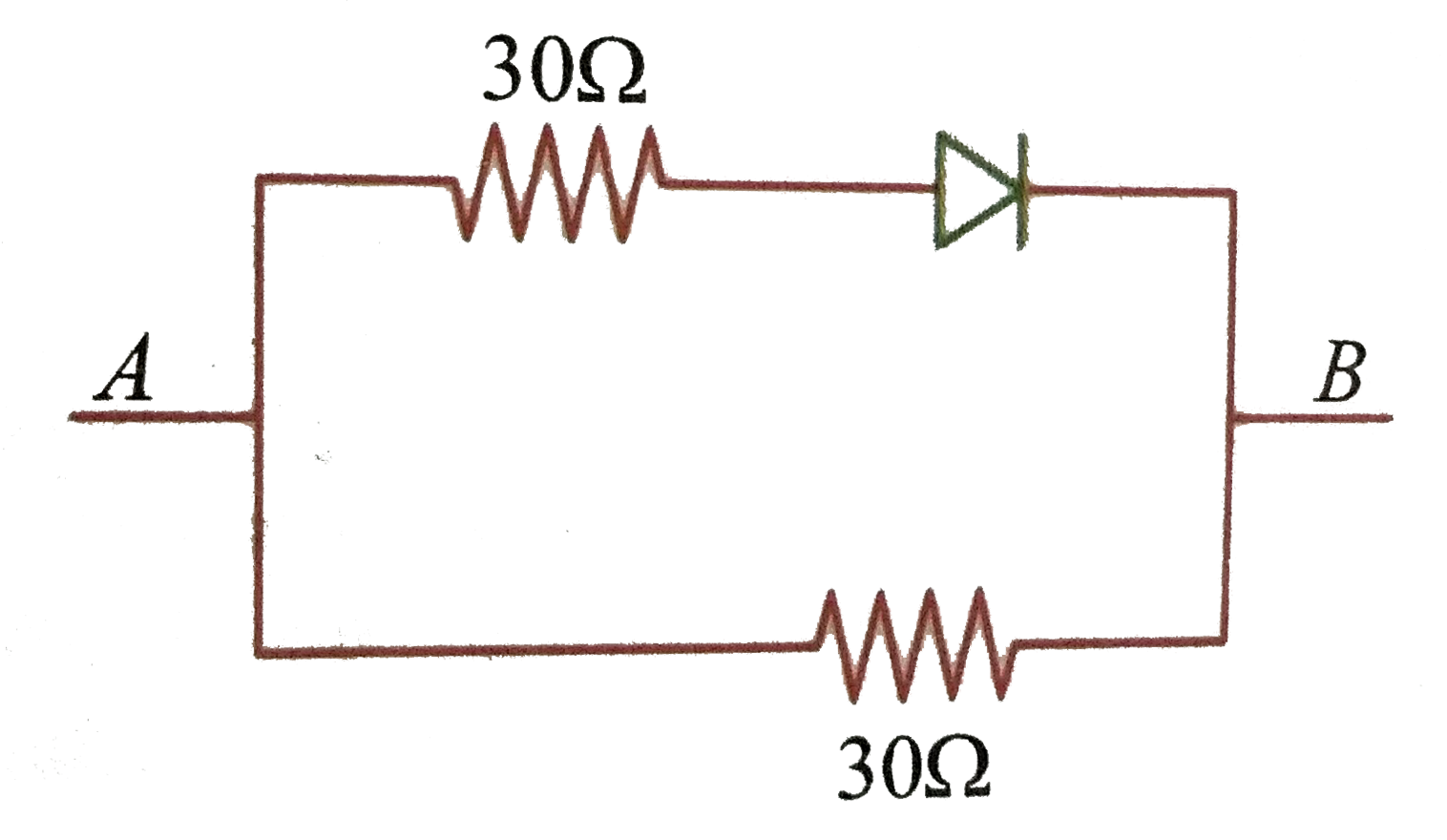What is the resistance of the diode circuit between A and B. (D1 and D2 are ideal diodes)

7 Ω
8 Ω
9 Ω
10 Ω
The correct Answer is:D
No current flows through D2.
∴ Resistance (R') between A and C is given by 14+112=13=1R'
∴ R'=3
∴ Total resistance between A and B = 3 + 7 = 10Ω
Topper's Solved these Questions
Similar Questions
Knowledge Check
An ideal diode
Ashould have zero resistance in the forward bias as well as in reverse bias.Bshould have zero resistance in the forward bias and an infinitely large resistance in reverse bias.Cshould have infinitely large resistance in the forward bias and zero resistance in reverse bias.Dshould have infinitely large resistance in forward as well as in reverse bias.In the diode circuit shown in figure,
 AD1andD2 are reverse biasedBD1andD2 are forward biasedCD1 is forward biased and D2 is reverse biased.DD1 is reverse biased and D2 is forward biased.
AD1andD2 are reverse biasedBD1andD2 are forward biasedCD1 is forward biased and D2 is reverse biased.DD1 is reverse biased and D2 is forward biased.The part of a circuit shown in the figure consists of two ideal diodes and a few resistors. The equivalent resistance of the circuit between A and B is
 A4ΩB13ΩC4Ω or 13ΩD4Ω or zero
A4ΩB13ΩC4Ω or 13ΩD4Ω or zero
A battery of 1.5V may be connected across the point A and B as shown in Fig . What is the current drawn from the battery if the positive terminal of the battery is connected to the point A and the point B. The junction diodes D1 and D2 used are ideal diodes.

View SolutionVA and VB denote potential of A and B, then the equivalent resistance between A and B in the adjoining circuit is (ideal diode).
 .
.
View SolutionVAandVB denot potentils of A and B then the equivalent resistance of A and B, then the equivalent resistance between A and B in the adjoining circuit is (ideal diode)

View SolutionIn the following circuit i1 and i2 are respectively

View SolutionFor the circuit shown in the figure. The equivalent resistance between point A and B for the two cases (i) VA>VB,(ii)VB>VA respectively is……….Ωand……….Ω respectively. (D1andD2 are ideal diodes)
View Solution


